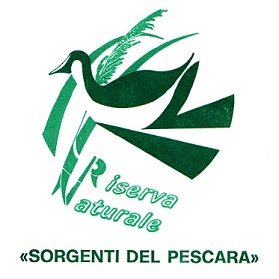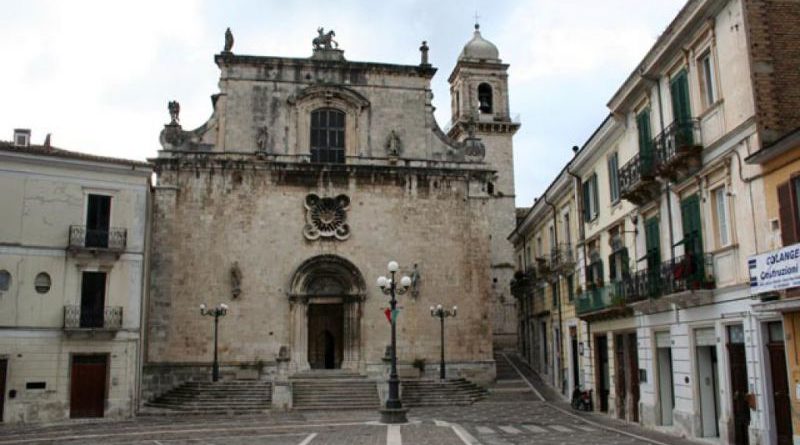🇬🇧 The church and convent of St. Francis
The Convent of St Francis is certainly documented in Popoli as far back as 1293 and its church faces the market square. Very little remains of its original appearance, a surviving single lancet window in the south-facing wall overlooks a small private green space, while its layout consists of a single nave flanked by chapels ending in a transept with shallow arms and a square apse.
Little remains of the original construction phase of the convent: it stood at least in part on a hillock facing the primitive nucleus of the town, beyond the square. Count of Popoli from 1479, in the following year Restaino Cantelmo promoted the construction of the tower (today a bell tower but once only for sighting and defence) of the same convent: this is attested by his coat of arms and the date of the epigraph on the base. The façade of the church should therefore also be dated to the same time, at least for the basement part, since the upper part, surmounted by the statue of St. George on horseback, is a reconstruction following the violent earthquake of 1688. Built by workers from Lombardy starting in 1494, the façade of the church in Popoli presents, between the two statues of St. Francis and St. Anthony resting on shelves, a portal modelled on derivation models from L’Aquila.
By contrast, the circular opening above the portal is inspired by the stylistic and decorative ways of late 15th-century Lombardy. Here, the rose window is freely interpreted as a fanciful composition in which the Renaissance decorative motifs (such as the frame, formed by ovules, spindle-shaped motifs and a sima sculpted in foliage or the spokes of the wheel) enclose the central coat of arms of the Cantelmo and Carafa families (to which Restaino’s second wife belonged). The other statues on the façade depict St. Michael the Archangel and St. Joseph on the left and right spirals respectively, St. Christopher and St. Mark on either side of the large window above the rose window, and St. John the Baptist, St. George and St. Jerome on the terminal cornice.

It was after 1527, the year of Giovan Giuseppe Bonaventura Cantelmo’s marriage to Porzia Colonna, that the two lions were finally placed on high pedestals at the top of the church’s entrance steps: although worn, the two animals bear shields between their paws with the rosta insignia, used by Count Restaino, and the Colonna coat of arms.
In the confessional chapel, under a Renaissance stone arch is a group of three wooden sculptures depicting Christ Crucified between the Madonna and St. John the Evangelist, the work of an unknown sculptor from the second half of the 15th century. In the transept wing to the right of the high altar, on the perimeter wall of the church, a beautiful 15th-century fresco, possibly attributed to Paolo da Montereale, depicts Our Lady of Mercy assisted by St John and Mary Magdalene. The fresco is inside a marble reredos that is dated 1732. On the other hand, the monumental portal-balcony placed between the church and the tower at the entrance to the corridor that ran through the entire monastery is more recent, as shown by the coat of arms of the Franciscan Pope Clement XIV. And finally, overlooking the same cloister, there is the Oratory of the Mercy modernised ‘in elegantiorem hanc formam’ in 1760.
Source: Popoli città d’arte e natura della Carsa Edizioni
Authors: Federico Palmerini, Andrea De Melis
Project: work-school with the “Amedeo di Savoia” high school (Popoli)


